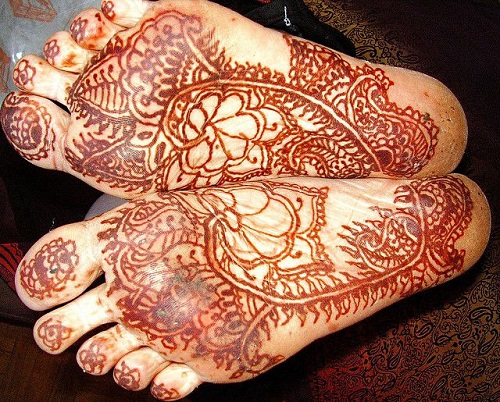FWP:
SETS == GROTESQUERIE
HENNA:
{18,4}
S. R. Faruqi's choices. For more on Ghalib's unpublished verses, see the discussion in {4,8x}.
Why is the lover (like) the beloved's footprints? Because after her departure the lover writhes in pain; while her gait is gracefully swaying, so that her footsteps might seem to have a side-to-side movement. And most especially because the lover writhes in his heart's blood; while the soles of her feet are reddened with henna, which is more or less blood-colored. For more about henna, see {18,4}.
And also because metaphorically she tramples the lover, crushing him and his heart, reducing him to a bloody writhing footprint. The lover as roadkill-- isn't it kind of a grotesque vision?
There's an enjoyable wordplay about painting between naqsh and nigaar , so that the common paired phrase naqsh-o-nigaar (see the definition above) hovers invisibly above the second line.

Asi:
After the leave-taking of the friend/beloved, we are writhing in blood, and it seems as if we are her henna-ed footprints. Because a footprint too writhes in the dust-- because of this fallenness he has called himself a footprint, and because of the writhing in blood he has given as a token the henna-ed foot.
== Asi, pp. 230-231